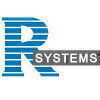Filter interviews by
Evolent Health International Interview Questions and Answers
12 Interview questions
Smoke testing checks basic functionality; regression testing ensures existing features work after changes.
Smoke testing is a preliminary test to check the basic functionality of an application.
Regression testing is performed to verify that recent changes haven't adversely affected existing features.
Example of smoke testing: Verifying that the login page loads and allows user access.
Example of regression testing: A...
SDLC and STLC are interconnected processes that ensure software quality throughout development and testing phases.
SDLC (Software Development Life Cycle) outlines the phases of software development, including planning, design, implementation, and maintenance.
STLC (Software Testing Life Cycle) focuses on the testing phases, ensuring that software meets quality standards before release.
Both cycles are interconnected;...
Bug life cycle is the process of identifying, reporting, fixing, retesting, and closing bugs in a software development project.
Bug identification: Bugs are identified by testers during testing.
Bug reporting: Testers report bugs to developers with detailed information.
Bug fixing: Developers resolve the reported bugs.
Bug retesting: Testers verify if the fixed bugs are resolved.
Bug closing: Once the bug is confirmed ...
Agile is a methodology that promotes iterative development and collaboration, while Scrum is a specific framework within Agile.
Agile focuses on delivering value to customers through iterative development and continuous feedback.
Scrum is a framework within Agile that defines roles, events, and artifacts to help teams work together effectively.
Scrum roles include Scrum Master, Product Owner, and Development Team.
Scr...
White box testing is testing the internal structure of the system while black box testing is testing the external behavior of the system.
White box testing is also known as clear box testing or structural testing.
It involves testing the code, architecture, and design of the system.
Examples include unit testing, integration testing, and code coverage analysis.
Black box testing is also known as functional testing.
It ...
I used various testing techniques such as black box, white box, regression, and exploratory testing.
Black box testing to test the functionality of the application without knowing the internal code
White box testing to test the internal code and structure of the application
Regression testing to ensure that new changes do not affect existing functionality
Exploratory testing to discover defects and issues that may not...
Test case is a set of steps to validate a specific functionality while use case is a scenario of how a user interacts with the system.
Test case is used to validate a specific functionality of the system while use case is a scenario of how a user interacts with the system.
Test case is written by the tester while use case is written by the business analyst or the end user.
Test case is usually a step-by-step instruct...
Claim process is the procedure followed by an insurance company to investigate, evaluate, and settle a claim.
The claimant reports the incident to the insurance company
The insurance company assigns an adjuster to investigate the claim
The adjuster evaluates the damages and determines the coverage
The insurance company issues a payment to the claimant if the claim is approved
The claimant may appeal the decision if the...
Agile Principles are a set of values and behaviors that promote flexibility, collaboration, and continuous improvement in software development.
Agile Principles are based on the Agile Manifesto, which includes values such as individuals and interactions over processes and tools, working software over comprehensive documentation, customer collaboration over contract negotiation, and responding to change over followi...
I create a project plan by identifying project goals, tasks, timelines, and resources. I use tools like Gantt charts and project management software.
Identify project goals and objectives
Break down tasks and create a work breakdown structure
Determine timelines and deadlines
Allocate resources and assign tasks to team members
Use tools like Gantt charts and project management software to track progress and make adjust...
Evolent Health International Interview Experiences
28 interviews found
I applied via Naukri.com and was interviewed in Sep 2024. There were 2 interview rounds.
(2 Questions)
- Q1. Basic to intermediate.net, EF, SQL, C#, OOP
- Q2. Basics of .Net Core
(1 Question)
- Q1. Deep into.net and sql
Interview Preparation Tips
I completed 2 tech rounds, shortlisted in both of them and then HR is saying that my experience is low for the position so they will not move forward. Seriously W.T.F..
And after that HR is not picking up calls
Even while scheduling interviews there were 3-4 rescheduled.
I appeared for an interview in Mar 2025, where I was asked the following questions.
- Q1. Difference between smoke and regression.
- Ans.
Smoke testing checks basic functionality; regression testing ensures existing features work after changes.
Smoke testing is a preliminary test to check the basic functionality of an application.
Regression testing is performed to verify that recent changes haven't adversely affected existing features.
Example of smoke testing: Verifying that the login page loads and allows user access.
Example of regression testing: After ...
- Q2. SDLC, STLC how this two life cycles parallely connected.
- Ans.
SDLC and STLC are interconnected processes that ensure software quality throughout development and testing phases.
SDLC (Software Development Life Cycle) outlines the phases of software development, including planning, design, implementation, and maintenance.
STLC (Software Testing Life Cycle) focuses on the testing phases, ensuring that software meets quality standards before release.
Both cycles are interconnected; STLC...
(2 Questions)
- Q1. Sql server, healthcare
- Q2. Python basic coding
(2 Questions)
- Q1. What is agile and scrum?
- Ans.
Agile is a methodology that promotes iterative development and collaboration, while Scrum is a specific framework within Agile.
Agile focuses on delivering value to customers through iterative development and continuous feedback.
Scrum is a framework within Agile that defines roles, events, and artifacts to help teams work together effectively.
Scrum roles include Scrum Master, Product Owner, and Development Team.
Scrum ev...
- Q2. What are Agile Principles and what is your favourite agile principle?
- Ans.
Agile Principles are a set of values and behaviors that promote flexibility, collaboration, and continuous improvement in software development.
Agile Principles are based on the Agile Manifesto, which includes values such as individuals and interactions over processes and tools, working software over comprehensive documentation, customer collaboration over contract negotiation, and responding to change over following a ...
Interview Preparation Tips
Skills evaluated in this interview
(2 Questions)
- Q1. Self introduction
- Q2. Previous process related question
I applied via LinkedIn and was interviewed before Jan 2024. There were 2 interview rounds.
(2 Questions)
- Q1. Tell me about yourself.
- Q2. What are your strengths?
Not a specific language, given situations and asked how you would code them while speaking through your process.
I applied via Referral and was interviewed in Sep 2023. There were 2 interview rounds.

(2 Questions)
- Q1. Tell me about yourself, your experience
- Q2. Presentation on the topic
I applied via workday and was interviewed in Mar 2023. There were 3 interview rounds.

(1 Question)
- Q1. One on one discussion on profile and job description
(2 Questions)
- Q1. Technical round about job profile
- Q2. Normal questions based on experiences
Interview Preparation Tips
I appeared for an interview before Feb 2024.
(2 Questions)
- Q1. Can you provide details about your previous job profile?
- Ans.
I was responsible for analyzing billing data and ensuring accuracy in billing processes.
Reviewed and analyzed billing statements to identify discrepancies
Communicated with clients to resolve billing issues
Generated reports on billing trends and performance
Collaborated with cross-functional teams to improve billing processes
- Q2. Can you provide more details about yourself?
- Ans.
I am a detail-oriented Billing Analyst with 5 years of experience in analyzing and managing billing processes.
5 years of experience in billing analysis
Strong attention to detail
Proficient in billing software and systems
Excellent communication and problem-solving skills
(2 Questions)
- Q1. Can you describe your previous job role?
- Ans.
I was responsible for analyzing billing data and ensuring accuracy in financial transactions.
Reviewed and verified billing data for accuracy
Identified and resolved discrepancies in billing records
Generated financial reports and analyzed trends
Communicated with clients regarding billing inquiries
Collaborated with other departments to streamline billing processes
- Q2. What can you tell me about the processes of enrollment and reinstatement?
- Ans.
Enrollment and reinstatement processes involve signing up for or reactivating a service or membership.
Enrollment typically involves filling out forms, providing necessary documentation, and paying any required fees.
Reinstatement may require meeting certain criteria, such as catching up on missed payments or fulfilling specific requirements.
Both processes often involve communication with the organization offering the se...
Interview Preparation Tips
I applied via Approached by Company and was interviewed in Jul 2022. There were 2 interview rounds.

(1 Question)
- Q1. Explain your Project. Explain V model. Explain SDLC. Explain STLC. Explain Agile ceremonies. Do you attend all the agile ceremonies? Tell me the positive and negative test cases for water bottle. What is d...
- Ans.
Quality Assurance interview questions covering project, V model, SDLC, STLC, Agile, testing, defects, UAT, Scrum, database testing, SQL.
Project explanation includes scope, objectives, deliverables, timelines, and team structure.
V model is a software development model that emphasizes testing at each stage of development.
SDLC is a process for developing software that includes planning, analysis, design, implementation, t...
Interview Preparation Tips
- Software Testing
- Manual Testing
- Database Testing
Skills evaluated in this interview
Top trending discussions






Evolent Health International Interview FAQs
Some of the top questions asked at the Evolent Health International interview -
The duration of Evolent Health International interview process can vary, but typically it takes about less than 2 weeks to complete.
Tell us how to improve this page.
Evolent Health International Interviews By Designations
- Evolent Health International Analyst Interview Questions
- Evolent Health International Senior Analyst Interview Questions
- Evolent Health International Senior Project Manager Interview Questions
- Evolent Health International Risk Analyst Interview Questions
- Evolent Health International Quality Analyst Interview Questions
- Evolent Health International Senior Engineer Interview Questions
- Evolent Health International Associate/Senior Associate -(Nontechnical) Interview Questions
- Evolent Health International Lead Engineer Interview Questions
- Show more
Interview Questions for Popular Designations
Overall Interview Experience Rating
based on 19 interview experiences
Difficulty level
Duration
Interview Questions from Similar Companies
Evolent Health International Reviews and Ratings
based on 327 reviews
Rating in categories
|
Analyst
82
salaries
| ₹4.7 L/yr - ₹10.5 L/yr |
|
Claims Adjudicator
74
salaries
| ₹3 L/yr - ₹6.5 L/yr |
|
Software Engineer
60
salaries
| ₹10 L/yr - ₹17.6 L/yr |
|
Senior Analyst
57
salaries
| ₹5.5 L/yr - ₹19 L/yr |
|
Senior Software Engineer
54
salaries
| ₹11.6 L/yr - ₹25 L/yr |

Oracle

KPIT Technologies

Intellect Design Arena

Oracle Cerner
- Home >
- Interviews >
- Evolent Health International Interview Questions













